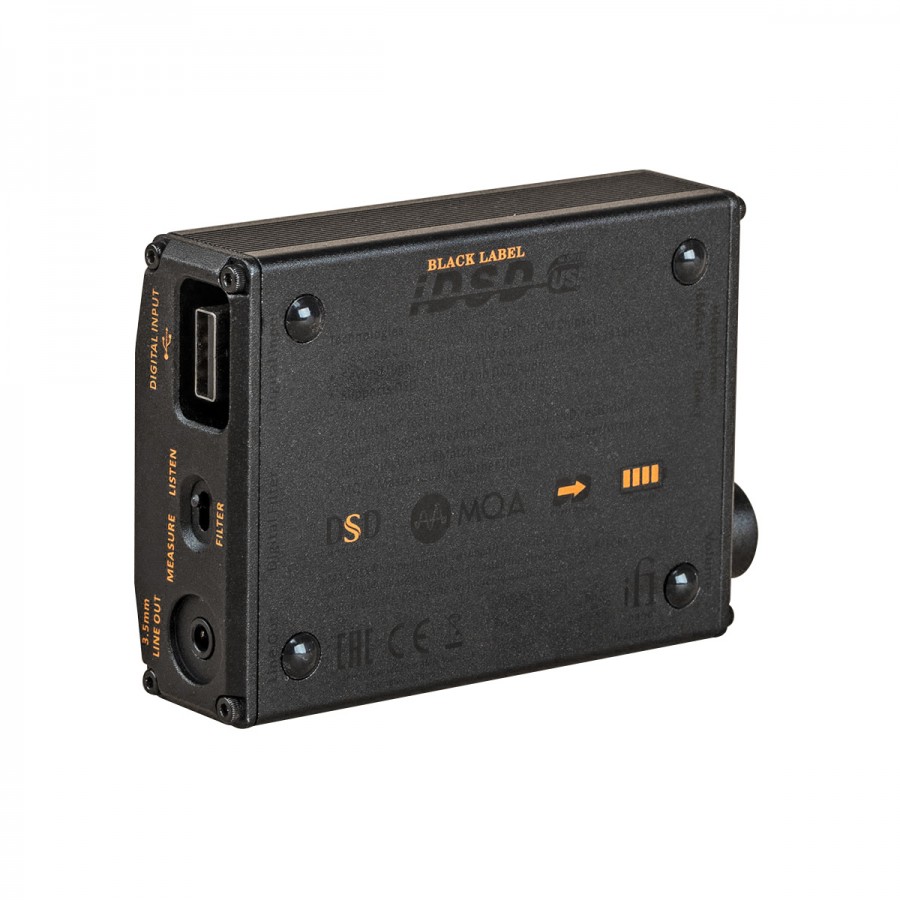

- Nano idsd bitperfect full#
- Nano idsd bitperfect portable#
- Nano idsd bitperfect plus#
- Nano idsd bitperfect free#
In fact, fun was available in buckets here with enough focus to enable each instrument to move with agility and flexibility. No bass bloom, pinched treble or midrange smearing to spoil the fun. It was reassuring to hear that the nano iDSD didn’t allow and frequency nasties to occur here. Vocals offered a sensitivity that was engaging while the guitar accompaniment was delicately coated onto the song. Still, for a mobile unit, the performance was excellent, in relative terms, at this very high resolution. Anyone looking for the ultimate in sonic reproduction really needs to head for a desktop unit. You could hear that the iDSD was coping very well but there were limits. For a mobile device like this, you’re not going to get a sense of space achieved by lots of dynamic reach. I upped the PCM to 24bit/192kHz with Looking for a Home from Kevin Greeninger and Dayan Kai. Hence, Rollins’ sax offered detail in terms of the movement of the reed and how the great man utilised it but the sax itself eased into place without much effort, such as the flowing nature of the music.
Nano idsd bitperfect plus#
It was here that the nano iDSD first truly swung into action exhibiting a cavernous soundstage with both midrange insight plus a balanced and rather smooth tonal output. Gillespie provided a lovely vocal line later in the track, incidentally. I then turned to more serious musical sources and, via my laptop, a SSD-powered MacBook, played Sonny Rollins’ with the superlative On the Sunny Side of the Street at 16bit/44.1kHz (a ripped WAV) with Sonny Stitt and Dizzy Gillespie in attendance. I did try the Listen EQ setting which offered a warmer, slightly subdued presentation but quickly returned to Measure which appeared to provide a more neutral but also extended response. Despite a lack in maturity and tonal richness from the file format, this level of analytical attention provided a measure of complexity to the track that enhanced the listening experience. Nevertheless, the iDSD provided a clear and, considering that this is an AAC file, relatively broad soundstage with admirable instrumental separation to enable detail to be accessed. You have to bear in mind that a smartphone is not exactly an audiophile source carrier and my lossless file is not exactly the best wrapper. I began with a wired connection to my iPhone 8 via the usual camera-type adaptor (not supplied by iFi, nor is a USB OTG cable) and played Marvin Gaye’s Mercy Mercy Me via AAC.
Nano idsd bitperfect free#
That is, the extraneous noise caused by the continuing house-keeping of other tasks that devices do while playing music, as well as the relatively poor component quality (for sonic production, that is) and the free and decidedly non-audiophile manner of the component layout. The problem with any music play on a general electronic device is the noise that gets in the way of music detail.
Nano idsd bitperfect full#
Why should you expect top quality music from a device that can work out your accounts, play games, run full blown films, browse social media and more? The reason is that any phone, tablet, laptop of even desktop is a multi-function device, not a dedicated music player. If you want fine detail, a measure of clarity and a balanced soundstage then a basic device, spewing forth, will not provide any of that. If you plug headphones into your phone or your laptop and play music through those devices then you will hear a melodic noise, sure, but not a great deal more than that.

Nano idsd bitperfect portable#
While iFi’s latest effort may not tread the line between features and performance as confidently as some, there’s no arguing it’s a competitively priced, versatile and portable device that could be of great service to you and your digital devices.A neat, yet solid looking DAC with an integrated headphone amplifier, Paul Rigby reviews the iFi nano iDSD Black Label If only it brought more timing precision and dynamic subtlety with it, the iFi would be getting on for ideal. Suddenly, the attention stolen by the vocal is also drawn to the song’s wavering electronics. We try both the iPhone 7 Plus and LG G6 and Christine And The Queens’ Tilted takes on greater shape than it does through the smartphones’ outputs, thanks to a lift in bass presence, weight and clarity. The drum streak that runs through Joy Division’s Atmosphereis more rousing, and its conversation with the cymbal taps and accompanying instrumentals is closer-knit. The DragonFly is the more skilled and precise showman, though, showing greater dynamic subtlety, punch and rhythmic flair.

That lends a hand to dense compositions like Jane’s Addiction’s Been Caught Stealing, as the iFi keeps the cacophony of electrics coherent and communicative. Compared to the presentation of the Audioquest DragonFly Red, our long-time favourite DAC around the £200 mark, it’s like upgrading from Economy to First Class – with the iFi, you get more elbow- and leg-room.


 0 kommentar(er)
0 kommentar(er)
